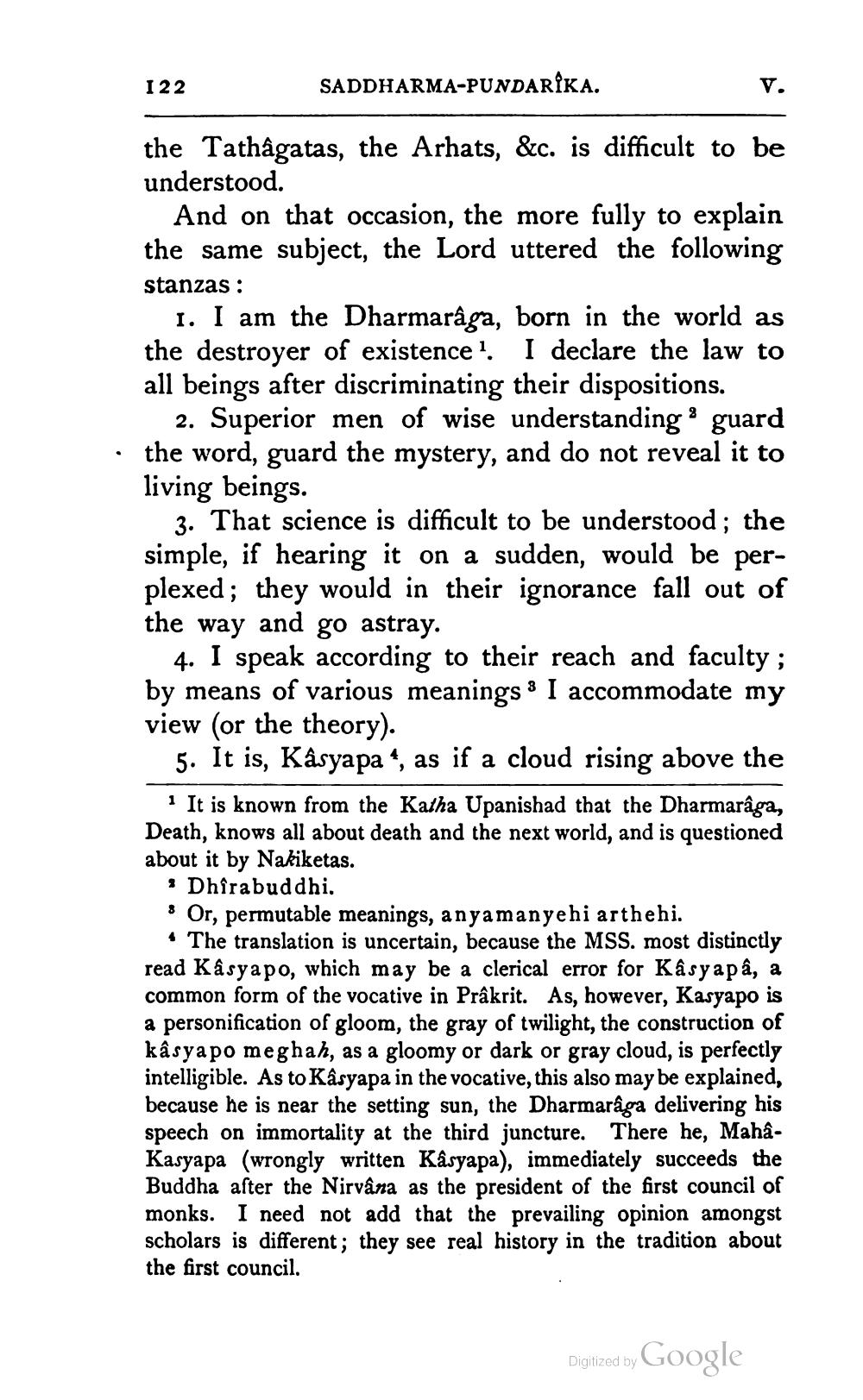________________
SADDHARMA-PUNDARÍKA.
the Tathagatas, the Arhats, &c. is difficult to be understood.
And on that occasion, the more fully to explain the same subject, the Lord uttered the following
122
V.
stanzas:
1. I am the Dharmarâga, born in the world as the destroyer of existence 1. I declare the law to all beings after discriminating their dispositions. 2. Superior men of wise understanding' guard the word, guard the mystery, and do not reveal it to living beings.
3. That science is difficult to be understood; the simple, if hearing it on a sudden, would be perplexed; they would in their ignorance fall out of the way and go astray.
4. I speak according to their reach and faculty; by means of various meanings I accommodate my view (or the theory).
3
5. It is, Kasyapa, as if a cloud rising above the
1 It is known from the Katha Upanishad that the Dharmarâga, Death, knows all about death and the next world, and is questioned about it by Nakiketas.
Dhirabuddhi.
› Or, permutable meanings, anyamanyehi arthehi.
The translation is uncertain, because the MSS. most distinctly read Kasyapo, which may be a clerical error for Kâsyapâ, a common form of the vocative in Prâkrit. As, however, Kasyapo is a personification of gloom, the gray of twilight, the construction of kâsyapo meghah, as a gloomy or dark or gray cloud, is perfectly intelligible. As to Kâsyapa in the vocative, this also may be explained, because he is near the setting sun, the Dharmarâga delivering his speech on immortality at the third juncture. There he, MahâKasyapa (wrongly written Kâsyapa), immediately succeeds the Buddha after the Nirvâna as the president of the first council of monks. I need not add that the prevailing opinion amongst scholars is different; they see real history in the tradition about the first council.
Digitized by Google




